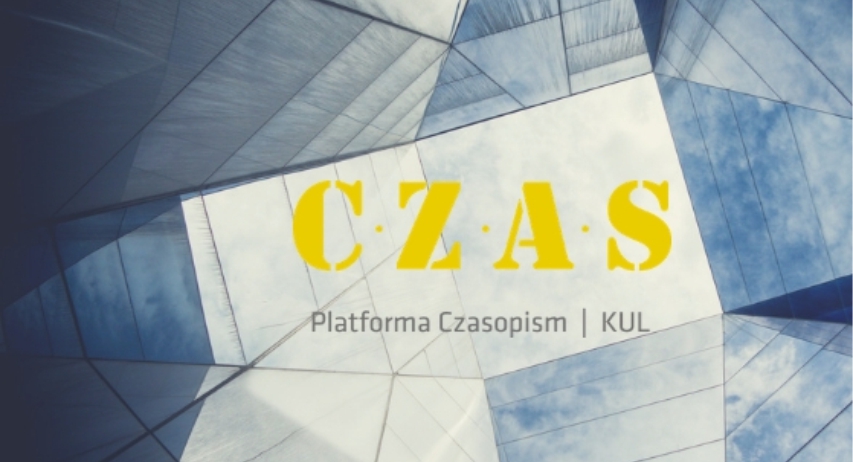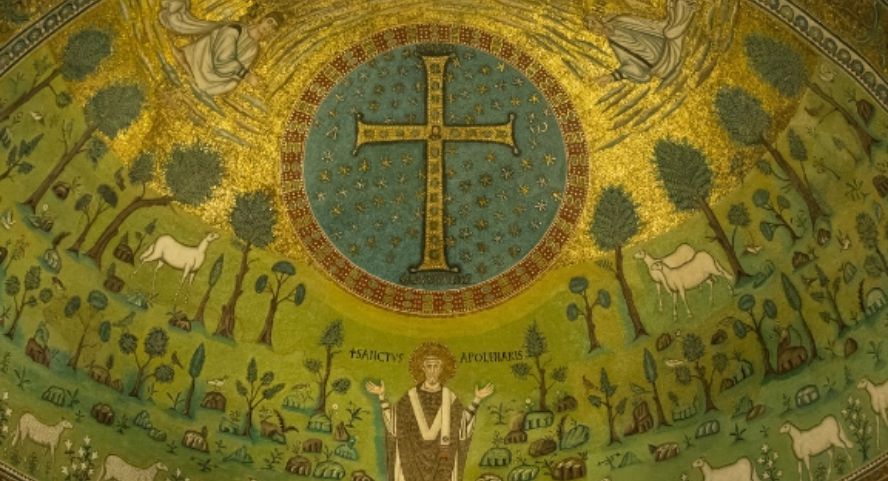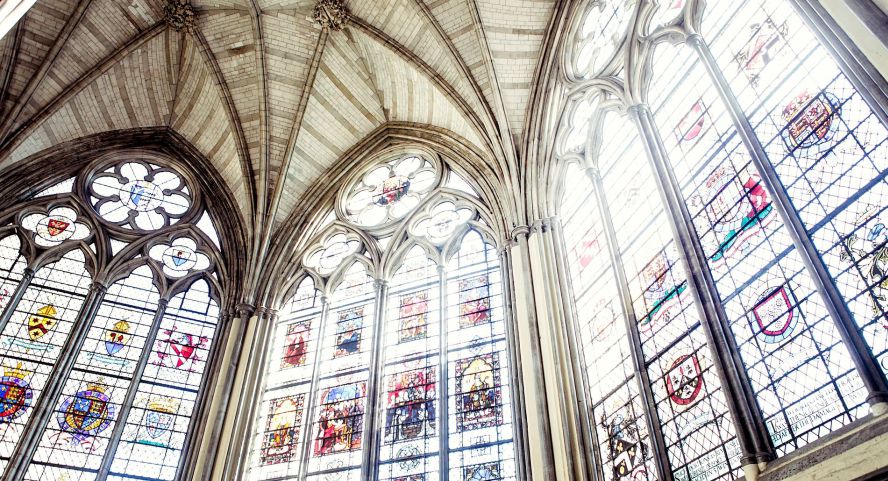Borrowings from "The Epitome" of the Work of Theodore Lector in "The Chronicle" of George the Monk for the Reign of Emperors Theodosius II and Marcian
Abstract
The purpose of this article is to analyse the use of sources by George Monk in his Chronicle. The analysis concerns George Monk's use of the Epitome of the works of Theodore Lector (Historia tripartita, Historia ecclesiastica) which were written in the early sixth century for the period of the reigns of Emperors Theodosius II and Marcian. Both obvious borrowings and information taken through Theophanes' Chronography are analysed. In addition, the author suggests, on the basis of analogies with the work of Theophanes, that three other passages in the Chronicle – the account of the awakening in Ephesus of the persecuted under Decius, the description of the revelation of the Trisagion hymn in Constantinople under the episcopate of Proclus, and the description of Pulcheria's choice of Marcian as successor to Emperor Theodosius II – were probably originally found in the aforementioned works of Theodore Lector.
Keywords:
George the Monk, Theodore Lector, Byzantine historiography, Trisagion, Pulcheria, Seven Sleepers of EphesusReferences
Anonymus, Narratio de rebus Armeniae, ed. G. Garitte, Louvain 1952.
Arethas Caesariensis, Scripta minora, ed. L.G. Westerink, Arethae archiepiscopi Caesariensis scripta minora, t. 1, Leipzig 1968. (Crossref)
Asclepiadae episcopi epistola ad Petrum Fullonem, ed. O. Günther, Epistulae imperatorum pontificum aliorum inde ab a. CCCLXVII usque ad a. DLIII datae Avellana quae dicitur collectio, cz. 1: Prolegomena, Epistulae I-CIV, Pragae – Vindobonae – Lipsiae 1895, s. 212, 14-219, 11.
Constantinus Stilbes, Libellus contra Latinos, ed. J. Darrouzès, Le mémoire de Constantin Stilbès contre les Latins, „Revue des études byzantines” 21 (1963) s. 50-100. (Crossref)
Demetrius Cyzicensis, Tractatus de rebus Armeniae, PG 127, 880 A-901 D.
Evagrius Scholasticus, Historia ecclesiastica, ed. J. Bidez – L. Parmentier, The ecclesiastical history of Evagrius: with the scholia, London 1898.
Felicis papae epistola ad Petrum Fullonem, ed. E. Schwartz, ACO III 229, 30-38 = ed. O. Günther, Epistulae imperatorum pontificum aliorum inde ab a. CCCLXVII usque ad a. DLIII datae Avellana quae dicitur collectio, cz. 1: Prolegomena, Epistulae I-CIV, Pragae – Vindobonae – Lipsiae 1895, s. 162, 1-169, 19.
Georgius Cedrenus, Historiarum compendium, ed. L. Tartaglia, Georgii Cedreni Historiarum compendium, Roma 2016.
Georgius Monachus, Chronicon, t. 2, ed. C. de Boor, Lipsiae 1904.
Iob, De Verbo incarnato commentarius, w: Photius, Bibliotheca, cod. 222, ed. R. Henry, Photius, Bibliothèque, t. 3, Paris 1962, s. 152-227.
Iohannes Damascenus, Contra Jacobitas, ed. B. Kotter, Die Schriften des Johannes von Damaskos, t. 4, Liber de haeresibus. Opera polemica, Berlin – New York 1981, s. 99-153.
Iohannes Damascenus, De fide orthodoxa, ed. B. Kotter, Die Schriften des Johannes von Damaskos, t. 2, Expositio fidei, Berlin – New York 1973.
Iohannes Damascenus, Epistula de hymno trisagio ed. B. Kotter, Die Schriften des Johannes von Damaskos, t. 4, Liber de haeresibus. Opera polemica, Berlin – New York 1981, 289-332.
Iustini eiscopi epistola ad Petrum Fullonem, ed. E. Schwartz, ACO III 229, 30-38 = ed. O. Günther, Collectio Avellana, Epistulae imperatorum pontificum aliorum inde ab a. CCCLXVII usque ad a. DLIII datae Avellana quae dicitur collectio, cz. 1: Prolegomena, Epistulae I-CIV, Pragae – Vindobonae – Lipsiae 1895, s. 182,5-187, 19.
Nestorius, Liber Heraclidis, tł. F. Nau, Nestorius, Le livre d’Héraclide de Damas, Paris 1910.
Nicephorus Callistus Xanthopoulos, Historia ecclesiastica, Patrologia Graeca 147.
Patria, ed. T. Preger, Scriptores originum Constantinopolitanarum, t. 2, Leipzig 1907 = Accounts of Medieval Constantinople. The Patria, tł. A. Berger, Cambridge – London 2013.
Quintiani episcopi epistola ad Petrum Fullonem, ed. E. Schwartz, ACO III 229, 30-38 = ed. O. Günther, Collectio Avellana, Epistulae imperatorum pontificum aliorum inde ab a. CCCLXVII usque ad a. DLIII datae Avellana quae dicitur collectio, cz. 1: Prolegomena, Epistulae I-CIV, Pragae – Vindobonae – Lipsiae 1895, s. 170, 1-183, 2.
Synaxarium Ecclesiae Constantinopolitanae, ed. H. Delehaye, Synaxarium ecclesiae Constantinopolitanae e codice Sirmondiano nunc Berolinensi, Brussels 1902.
Theodorus Lector, Epitome, ed. R. Kosiński – A. Szopa – K. Twardowska, Historie Kościoła Jana Diakrinomenosa i Teodora Lektora, Kraków 2019 = ed. G.C. Hansen, GCS NF 3, Berlin 1995.
Theophanes, Chronographia, t. 1, ed. C. de Boor, Lipsiae 1883.
Victor Tonnonensis, Chronicon, ed. R. Kosiński, Wiktor z Tonnony i jego dzieło, Kraków 2023, 236-289.
Victoris Tonnennensis episcopi Chronica, MGH, Auctores antiquissimi 11, ed. T. Mommsen, Berlin 1894 = Vittore da Tunnuna, Chronica. Chiesa e impero nell’età di Giustiniano, ed A. Placanica, Firenze 1997.
Victoris Tunnunensis Chronicon cum reliquiis ex Consularibus Caesaraugustanis et Iohannis Biclarensis Chronicon, ed. C. Cardelle de Hartmann, commentaria historica ad Consularia Caesaraugistana et ad Iohannis Biclarensis Chronicon, ed. R. Collins, Corpus Christianorum, Series Latina CLXXIII A, Turnhout 2001.
Abramowski L., Untersuchungen zum „Liber Heraclidis” des Nestorius, Louvain 1963.
Accounts of Medieval Constantinople. The Patria, tł. A. Berger, Cambridge – London 2013.
Berger A., Untersuchungen zu den Patria Konstantinupoleos, Bonn 1988.
Blaudeau P., Alexandrie et Constantinople (451-491). De l’histoire à la géo-ecclésiologie, Roma 2006.
Blaudeau P., Discours apologétique et stratégie de substitution: le cas de Flavien de Constantinople dans le Liber Heraclidis de Nestorius, w: L’apologétique chrétienne, red. E. Mathieu – D. Boisson, Rennes 2012, s. 99-111. (Crossref)
Blaudeau P., Le Siè ge de Rome et l’Orient (448-536). Étude géo-ecclésiologique, Rome 2012.
Boor C. de, Neue Fragmente des Papias, Hegesippus und Pierius in bisher unbekannten Excerpten aus der Kirchengeschichte des Philippus Sidetes, Texte und Untersuchungen zur Geschichte der altchristlichen Literatur 5/2, Leipzig 1888.
Boor C. de, Zur Kenntniss der Weltchronik des Georgios Monachos, w: Historische Untersuchungen. Arnold Schaefer zum fünfundzwanzigjährigen Jubiläum seiner akademischen Wirksamkeit, Bonn 1882, s. 276-295.
Burgess R., The Accession of Marcian in the Light of Chalcedonian Apologetic and Monophysite Polemic, „Byzantinische Zeitschrift” 86/87 (1993/1994) s. 50-54. (Crossref)
Croke B., Two Early Byzantine Earthquake and Their Liturgical Commemoration, „Byzantion” 51 (1981) s. 125-135.
Dagron G., Constantinople imaginaire. Études sur le recueil des Patria, Paris 1984. (Crossref)
Downey G., Earthquakes at Constantinople and Vicinity, A.D. 342-1454, „Speculum” 30 (1955) s. 596-600. (Crossref)
Gentz G., Die Kirchengeschichte des Nicephorus Callistus Xanthopulos und ihre Quellen, red. F. Winkelmann, Berlin 1966.
Ginter K., Spór o ‘Trisagion’, „Res Historica” 14 (2002) s. 221-231.
Ginter K., The Trisagion Riots (512) as an Example of Interaction between Politics and Liturgy, „Studia Ceranea” 7 (2017) s. 41-57. (Crossref)
Grillmeier A. – T. Hainthaler, Christ in Christian Tradition, t. 2: From the Council of Chalcedon (451) to Gregory the Great (590-604), cz. 2: The Church of Constantinople in the sixth century, tł. J. Cawte – P. Allen, London 1995.
Grumel V., La Chronologie, Paris 1958.
Guidoboni E. – Comastri A. – Traina G., Catalogue of ancient earthquakes in the Mediterranean area up to the 10th century, Bologna 1994.
Historie Kościoła Jana Diakrinomenosa i Teodora Lektora, tł. R. Kosiński – A. Szopa – K. Twardowska, Kraków 2019.
Holum K.G., Theodosian Empresses. Women and Imperial Dominion in Late Antiquity, Berkeley – Los Angeles – London 1982.
Honigmann E., Stephen of Ephesus (April 15, 448-Oct. 29, 451) and the Legend of the Seven Sleepers, w: E. Honigmann, Patristic Studies, Città del Vaticano 1953, s. 125-168.
Janeras S., Le Trisagion: une formule brève en liturgie comparée, w: Acts of International Congress. Comparative Liturgy fifty Years after Anton Baumstark (1872-1948), red. F. Taft – G. Winkler, Roma 2001, s. 495-562.
Kosiński R., Obraz kobiet w wybranych dziełach historiografii kościelnej z VI wieku. Część 1. Historia Kościoła Teodora Lektora i Kronika Wiktora z Tonnony, „Czasopismo Naukowe Instytutu Studiów Kobiecych” 13 (2022) s. 9-39. (Crossref)
Kosiński R., The Chronicle by George the Monk and Its Relation to Theodore Lector’s Work, „Res Gestae” 5 (2017) s. 46-72.
Kosiński R., Wiktor z Tonnony i jego dzieło, Kraków 2023.
Lilie R.-J. – Ludwig C. – Zielke B. et al., Prosopographie der mitbyzantinischen Zeit Online, Berlin 2013.
Opitz H.-G., Theodorus 48, w: Realencyclopädie der classischen Altertumswissenschaft, t. 5A, red. A.F. Pauly – G. Wissowa – W. Kroll, Stuttgart 1957, k. 1874.
Schwartz E., Publizistische Sammlungen zum acacianischen Schisma, München 1934.
Stiernon D., Giobio, w: Dizionario patristico e di antichità cristiane, t. 2, red. A. Di Berardino, Genova 1984, k. 1518.
License

This work is licensed under a Creative Commons Attribution-NoDerivatives 4.0 International License.
Papers published in Vox Patrum are covered by the Attribution-NoDerivatives 4.0 International (CC BY-ND 4.0) licence. Authors and users can use published works licensed under the CC-BY-ND since 2018. For earlier publications, copyrights are available under fair use rights in accordance with the Act of February 4, 1994 on copyrights and related rights.







